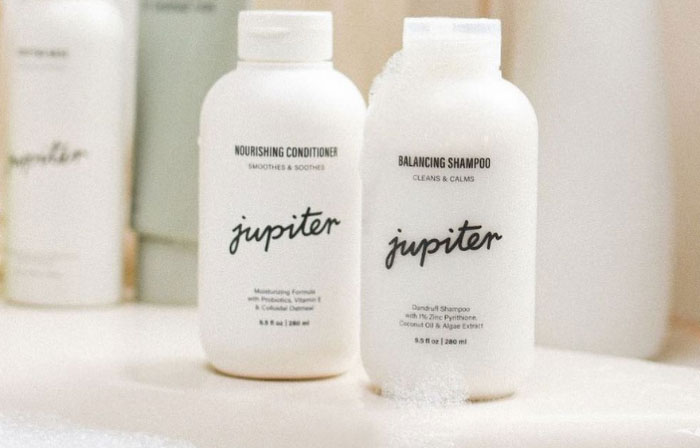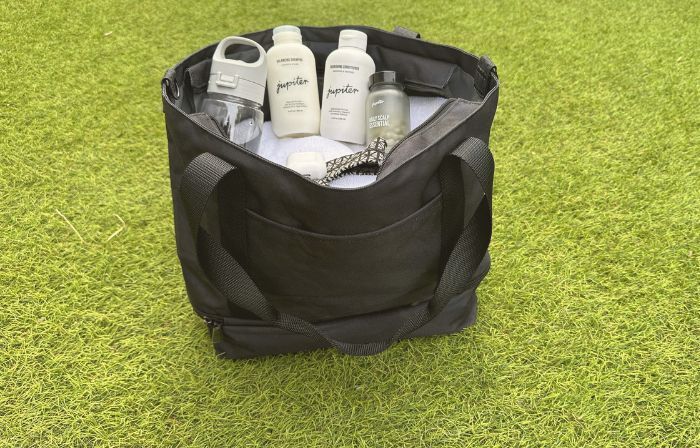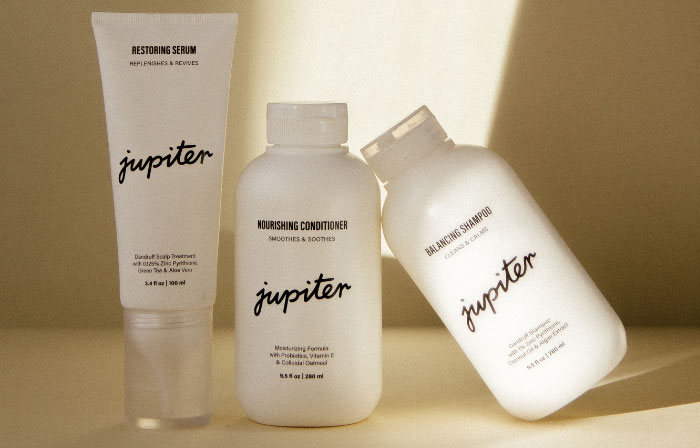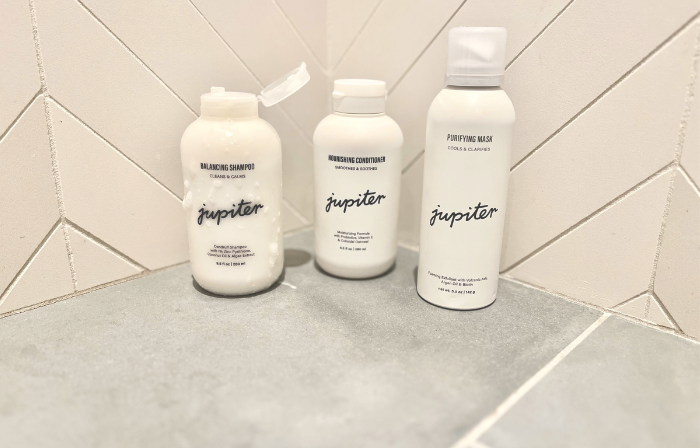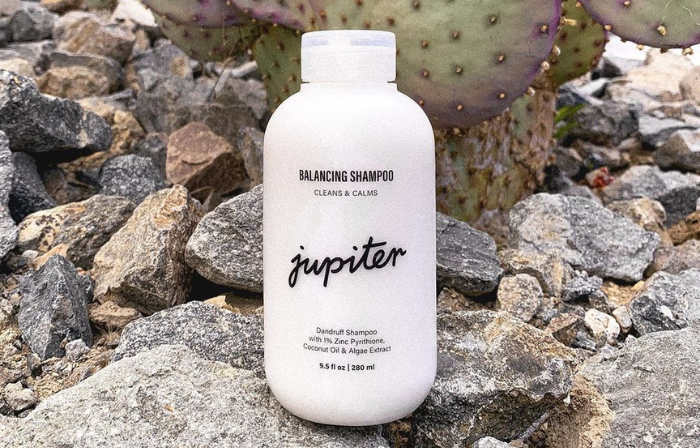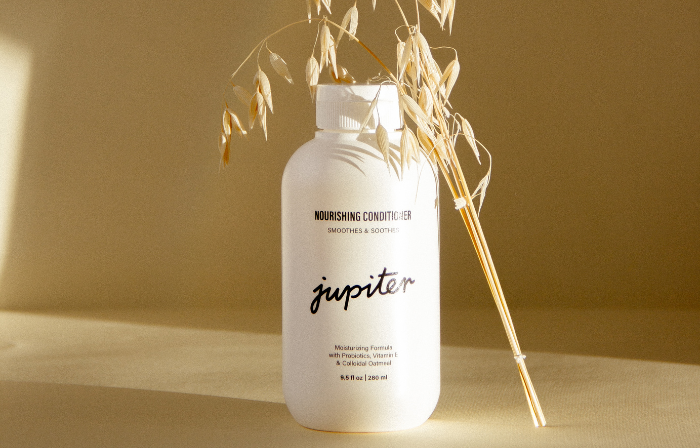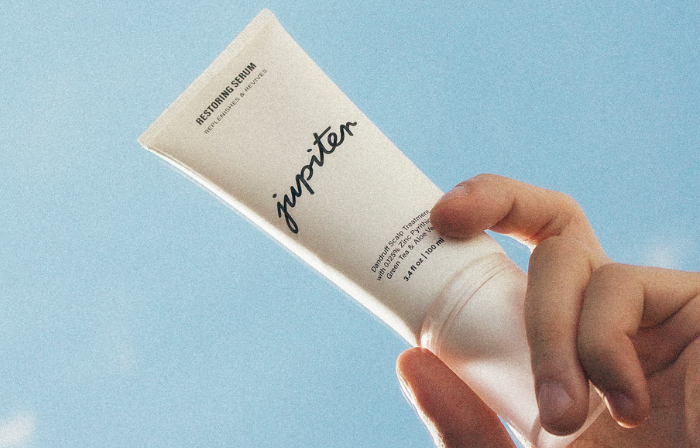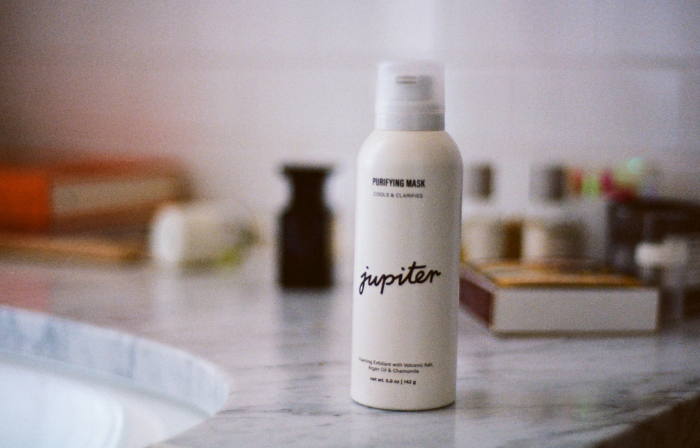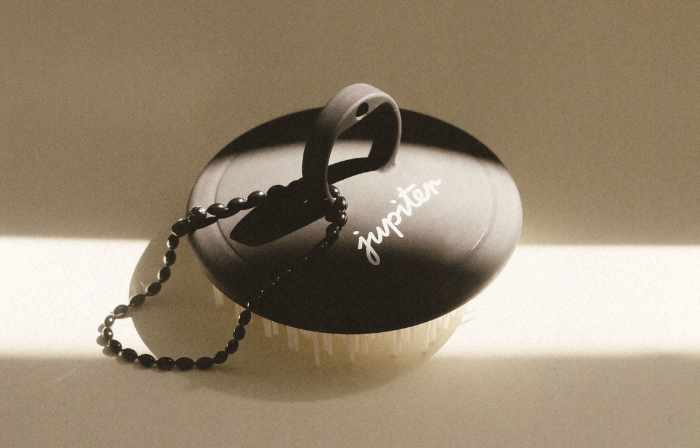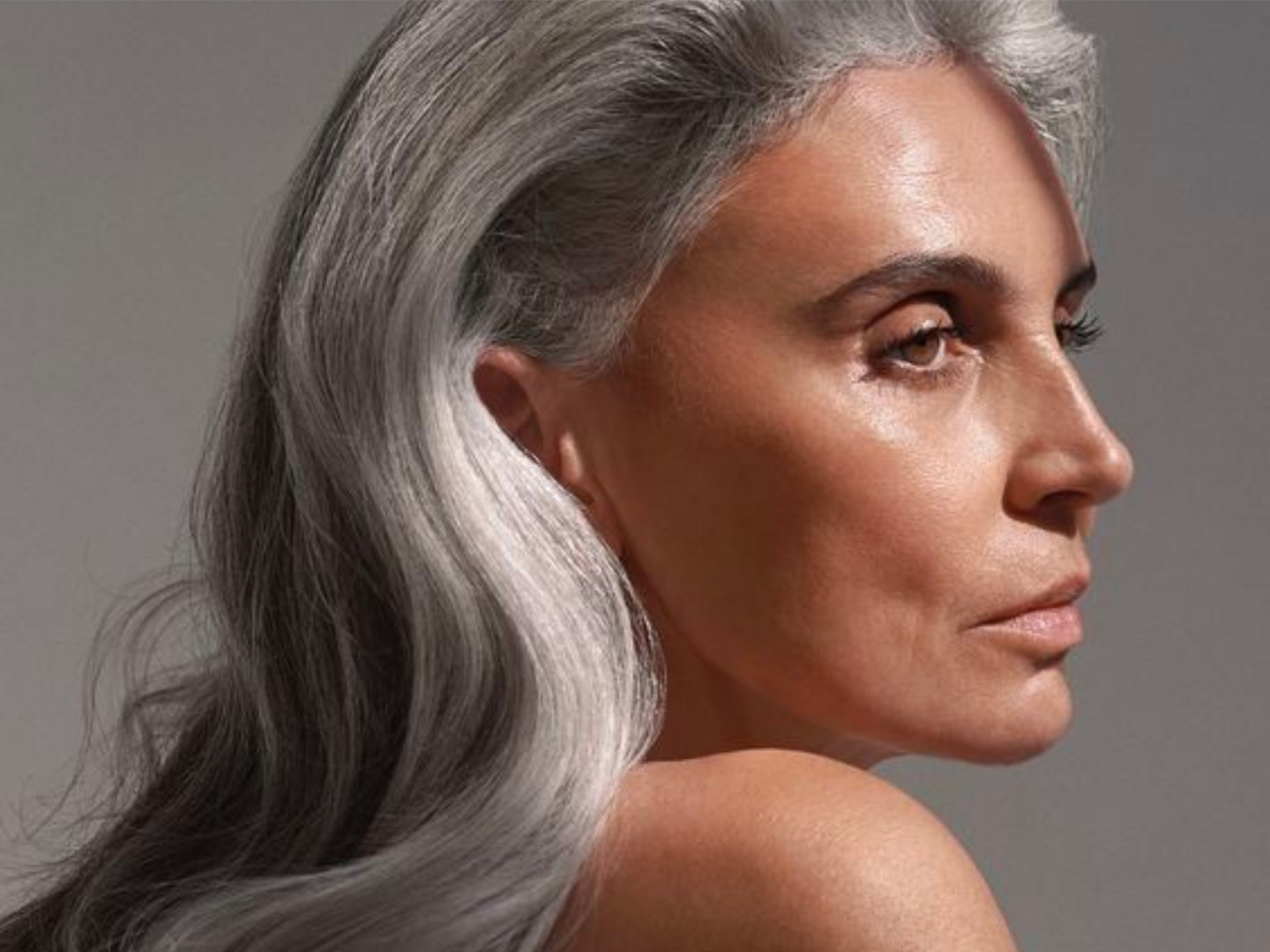It’s no secret that our body changes as we begin to age. When menopause hits, women are prepared for the big changes – hot flashes, difficulty sleeping, mood swings, and even weight fluctuations. But what about the changes to your skin and scalp? For many women, it leads to increased scalp irritation, dry skin, eczema, and can even be linked to dandruff, which can be just as challenging. Why does menopause lead to dandruff, and what can you do if you experience it? Read on to learn more.
What is dandruff and what causes it?
Have you ever noticed flakes on your scalp or the collar of your shirt? They may be small and white or larger and yellowish in color. That is dandruff, an incredibly common condition that can lead to flaking, redness, and irritation of your scalp. While harmless, it can become a nuisance, causing itchy discomfort, visible flaking, and even pain. Moreover, dandruff doesn’t only occur on the scalp. You may also notice it in your eyebrows and even in men’s facial hair.
But why does dandruff occur?
Though the underlying cause may vary, scientists believe dandruff is linked to Malassezia, a fungus commonly found on the skin. It is often found on or near the sebaceous glands on the face and scalp. When the fungus grows too rapidly, you may see dandruff flakes appear or experience itchiness. A more severe form of dandruff called seborrheic dermatitis can cause scaly patches or red skin on the scalp. Dandruff can also be the result of lifestyle factors including your diet, changes in climate, stress, and exercise.
Dandruff is not a symptom of hygiene or how often you wash your hair. It can occur to just about anyone at any time, including during menopause.
What kinds of changes happen to the skin during menopause?
Menopause has very tangible physical effects on the body, including many hair and skin conditions. While it’s true your skin naturally changes as you age, menopause can accelerate or even hijack that process, giving you new and different issues to contend with, like fungal infections. It’s important to understand these changes and why they may occur to better understand how you can adjust your hair and skincare routine to combat any issues.
Most of the changes to your skin and hair during menopause relate to the reduction of estrogen. Here are some of the most common changes your skin may start to experience during menopause.
Estrogen
Let’s talk about estrogen for a moment. Estrogen levels affect your hair and skin. Changes in your skin and hair after menopause can be caused by rapidly declining estrogen levels. Estrogen prevents bone loss, and starting hormone therapy can benefit some women around the start of menopause.
Estrogen can promote water retention and the plumpness of the skin. When estrogen drops, you can lose some of the molecules that can give your skin that nice and moisturized look and feel. Estrogen can also contribute to hair growth and its fullness. Lacking or declining estrogen can result in hair thinning.
Regarding vaginal dryness, estrogen can be administered using a cream or other products you can find at your local pharmacy. Always discuss with your doctor before beginning treatment.
Oestrogen is one of the main female sex hormones. It is needed for puberty, the menstrual cycle, pregnancy, bone strength, and more. Oestrogen levels can be at their highest around the middle of your cycle. Oestrogen levels can be at their lowest during your period. During menopause, your oestrogen levels can begin to fall.
If the testosterone levels are higher in relation to oestrogen, then sebum production in the skin can increase.
Sebum is the oily substance that the body produces in order to keep the skin moisturized. On your scalp, an overproduction of sebum is often associate with dandruff, and a lack of sebum can lead to dry scalp.
Menopause has very tangible physical effects on the body, including many that directly affect your skin and hair.
How Can Menopausal Changes to Your Skin Affect Your Scalp?
As changes in hormones begin to impact your skin, including the skin on your scalp, you may notice a change in your scalp microbiome. This in turn can increase the likelihood of dandruff.
Because our skin becomes thinner, it weakens the skin’s natural protective barriers. This can increase the possibility of an overproduction of Malassezia on your scalp and compromises the body’s ability to regulate the production of oils which can lead to white flakes and irritation.
Additionally, the decrease in estrogen and increased sensitivity and dryness often aggravates skin prone to conditions like psoriasis and dryness. Dry skin, weakened defenses, and an overall reduction in the ability to retain moisture can also increase the occurrence of flaking skin cells, itching, and irritation.
If you see redness or rashes, always make sure you consult a doctor. A dermatologist may rule out eczema, rosacea, or any other allergic reactions, giving you medical advice and offering a better solution.
Itchy Scalp From Menopause: What Exactly To Do
While dandruff may be a natural part of aging, there are lots of things you can do to help curb flakes and scalp discomfort. With the right products and scalp care routine you can increase the health of your skin, scalp, and hair.
It's In Your Diet
What you eat and drink can be an important component in your skin’s appearance, and can impact your scalp health. Make sure your diet includes essential fatty acids (like the omega-3s found in fish, eggs, soy products, and many nuts) to help boost your skin’s natural oil barrier. Staying hydrated will also help keep flakes and dryness at bay. Reduce alcohol consumption and increase your daily water intake. Your skin and scalp will thank you.
Lifestyle Factors
In addition to your diet, overall lifestyle changes can make a big impact. Maintaining healthy habits is good for your health and your menopausal hair. Healthy habits can help with weight gain, itchy skin, hot flushes, and many other menopause symptoms. Supplements are always a great start, and taking a vitamin C supplement can help maintain collagen production and compensate for the lack of oestrogen.
Get outside and get some fresh air. Just make sure to grab your sunscreen. Sunscreen is your friend, and lack of sun protection can lead to signs of aging as well as the possibility of skin cancer.
Hormone therapy replacement or HRT can help to relieve most menopause and perimenopause symptoms, including hot flushes, brain fog, mood swings, and more. Contact your medical provider to see if that is the right thing for you.
Change Up Your Wash & Styling Routine
You can generally manage post- menopause skin dryness with a good skincare routine. Cleanse your skin gently. If your skin is dry, cleanse every day to remove makeup. Try not to use a foaming cleanser unless you have oily skin. Try a non-foaming gentle cleanser designed for your skin type.
After menopause, women tend to need to up their moisturizing game. Moisturizers that contain hyaluronic acid help hold water, giving you that supple look. Serums and creams with antioxidants may help as well.
While it may feel good, taking hot showers can negatively affect your skin and scalp. It can make already damaged skin further dried out and lead to itching and redness on the scalp. Instead of a hot shower, try a cool scalp rinse to lock in moisture and avoid dryness.
Ingredients in hair care products like Zinc Pyrithione, ketoconazole, salicylic acid, coal tar, selenium sulfide, and tea tree oil may be prescribed by your dermatologist to help control dandruff and treat the symptoms of dandruff like flaky skin, hair loss, and itchy scalp. Shampooing with an over-the-counter medicated shampoo and other hair care can help scalp conditions as well, but make sure to do your research to determine which shampoo and ingredients are right for you. Sensitivity to certain hair care products can cause contact dermatitis, which may also lead to dandruff.
Another change to your routine - limit heat styling on your hair when possible. Picking up that hair dryer or curling iron less frequently can help keep your scalp from drying out.
Lastly, remember that consistency is key when it comes to treatment for dandruff. If you’re experiencing menopause-related dandruff, take our quiz to find the personalized set of products for your scalp and find a routine that works for you.
Invest In The Right Shampoo
The easiest way to treat menopause-related dandruff is to introduce the right antifungal products and lifestyle choices into your routine. It’s important to use a dandruff shampoo formulated with Zinc Pyrithione (ZPT), an active ingredient in hair care that has been proven in clinical healthcare studies to help stop fungal growth associated with flaking and scalp discomfort.
Finding the right hydrating hair products and soaps that help to promote a healthy scalp and skin are key when it comes to dermatology and menopause. The hormone changes that come along with menopause are no joke. The most important thing is finding the right products for you and your hair and scalp.
At Jupiter, our Balancing Shampoo and Restoring Serum are scientifically-formulated with ZPT to easily manage dandruff. Paired with our nourishing scalp care products, you’ll be flake-free and refreshed. Learn more about Jupiter’s holistic set of scalp care products here.
